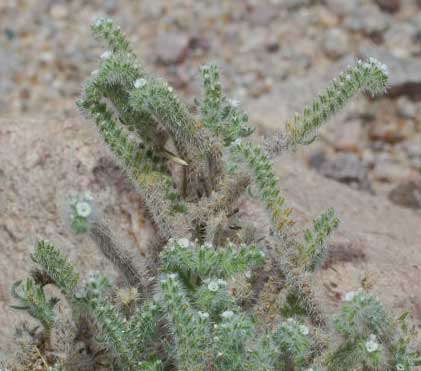Reptiles of Pisgah Crater
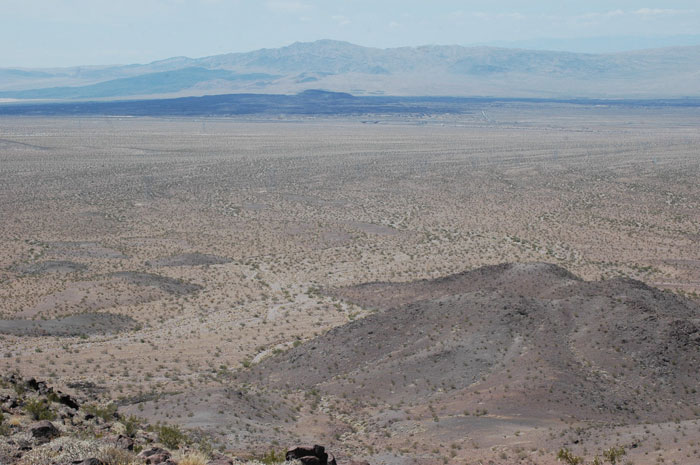
^The fan below Cady Mountains looking toward the black lavas of Pisgah Crater to the south. Much of the foreground fan is in the proposed SES Solar 1 energy project.
One of us (LMC) took a zoology field trip in the 1980s during a University of California at Berkeley class with herpetologist Dr. Harry Greene. We stopped at a graduate student research site at Pisgah Crater and spent some time looking for lizards in this diverse area. All animals were caught for a brief time and let go back to the spot where they were caught. The following photos were from that expedition.
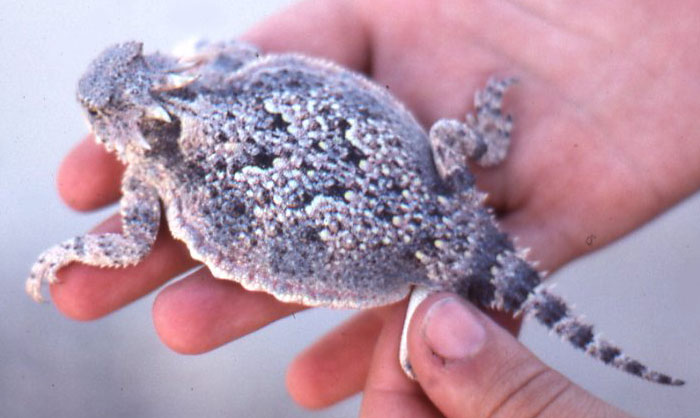
^Dark-colored Desert horned lizard (Phrynosoma platyrhinos) from lava flows.
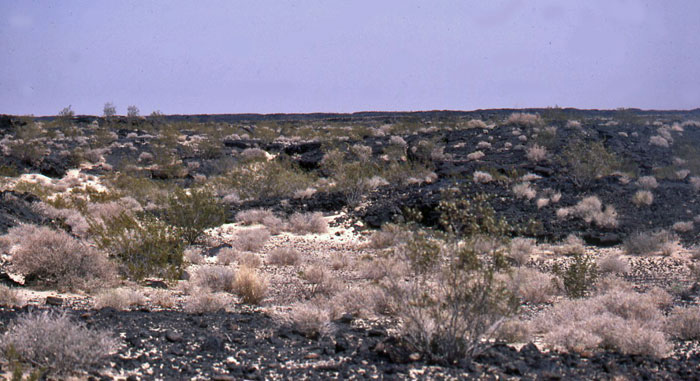
^Black lava flows around Pisgah Crater, with Creosote-Bursage habitat.
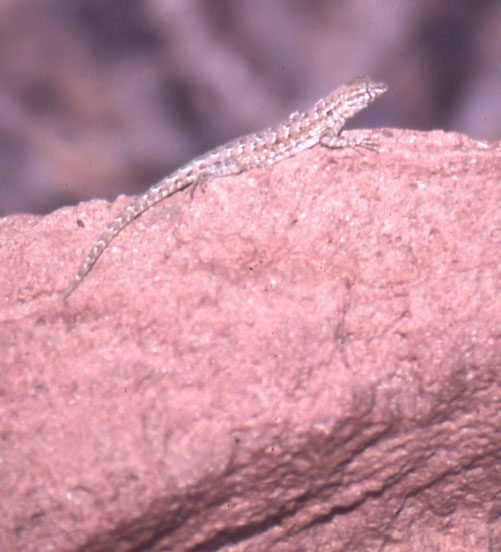
^Side-blotched lizard (Uta stansburiana) basking on a rock. Darker color morphs can be seen on the lava.
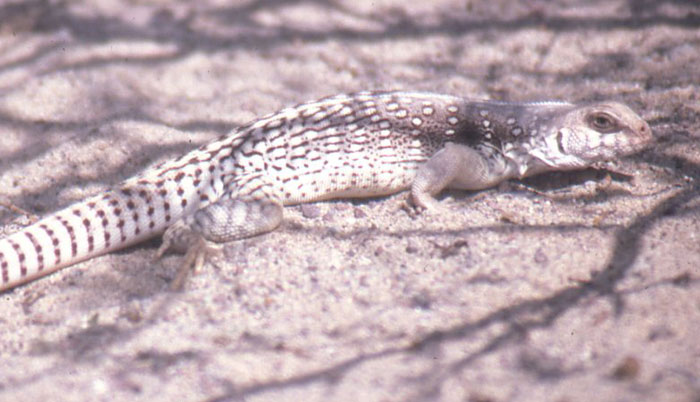
^A large Desert iguana (Dipsosaurus dorsalis) hides under a Creosote.
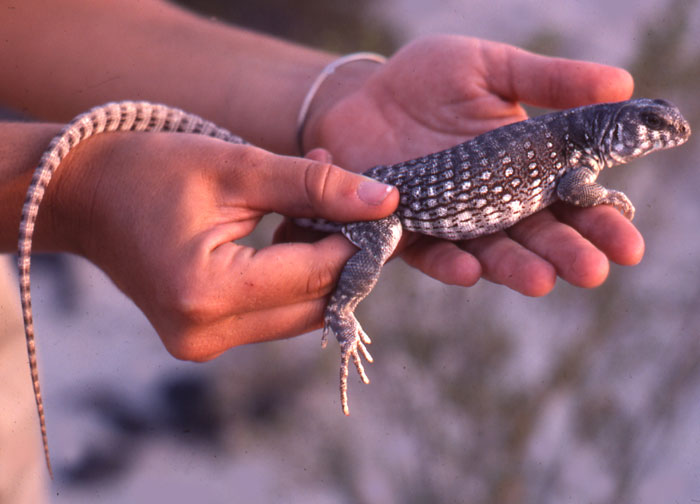
^These large iguanas are herbivorous, and will climb up into Creosote bushes to eat the flowers.
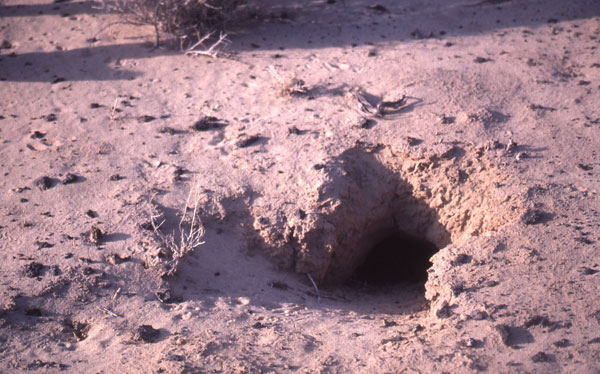
^A Desert tortoise (Gopherus agassizii) burrow in looser sediment between lava flows.
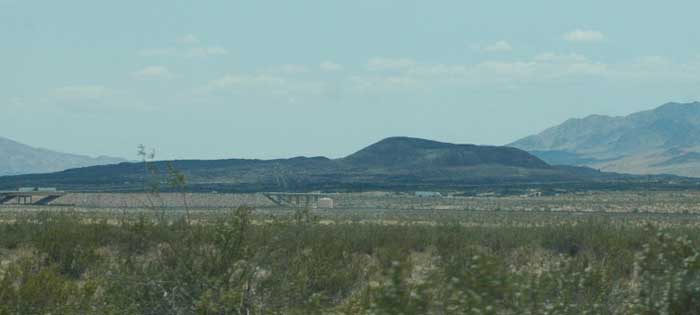
^The crater.
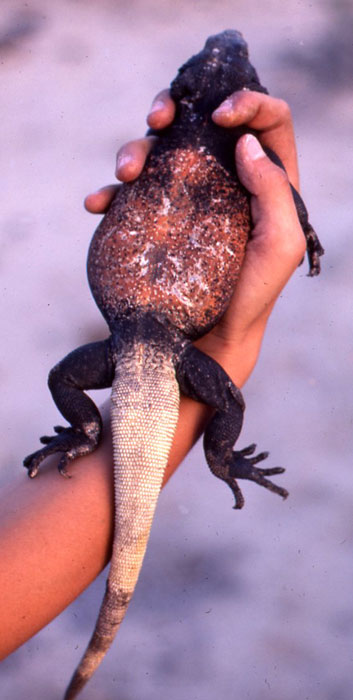
^A large male Chuckwalla (Sauromalus obesus), exhibiting red colors on his back. These plant-eaters occupy rock outcrops and hide in the lava crevices.
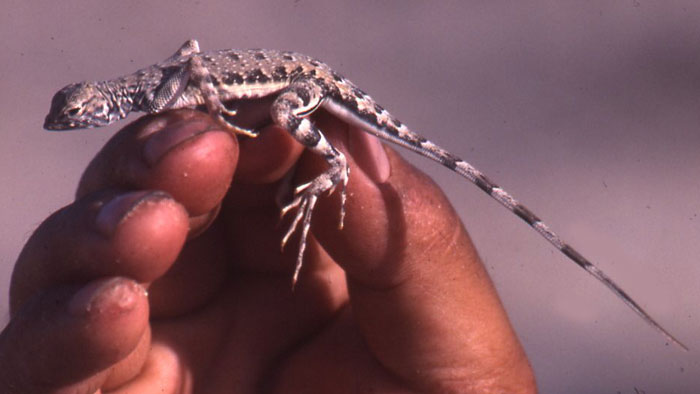
^A young Zebra-ailed lizard (Callisaurus draconoides). These insect-eaters can run fast up on their long hindlegs when chased by a predator.
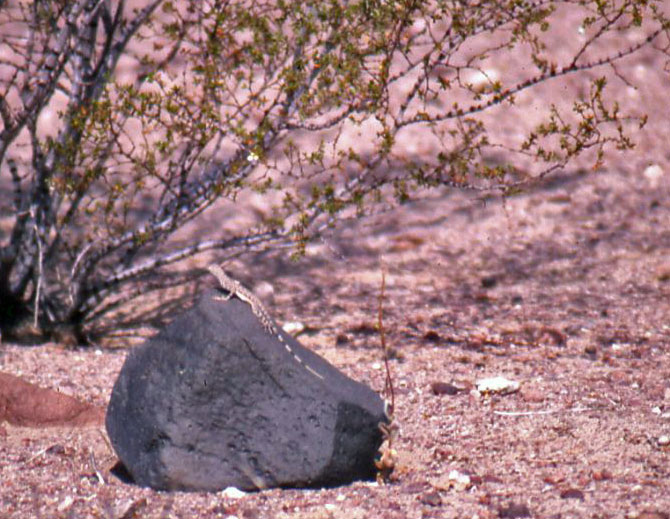
^Zebra-tailed lizard basking on a stone.
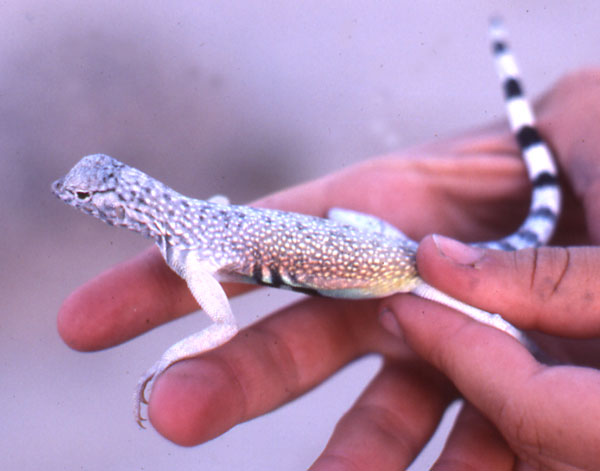
^A larger adult make Zebra-tail, showing colors on the sides.
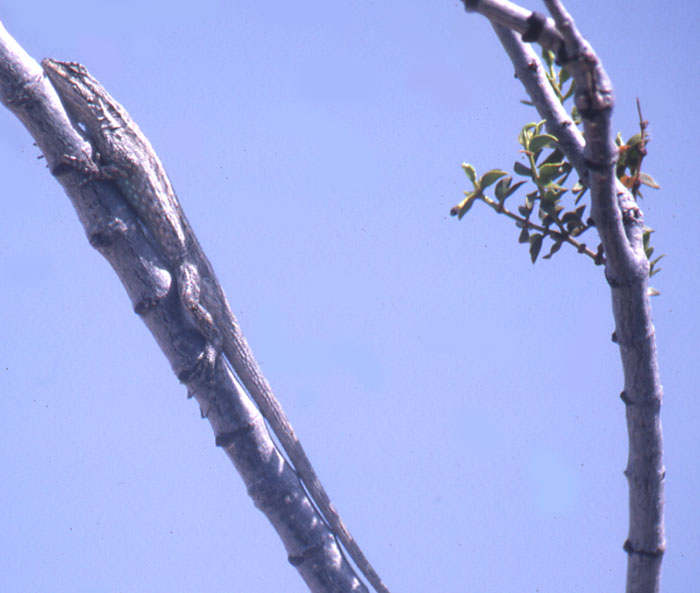
^The unique arboreal Long-tailed brush lizard (Urosaurus graciosus), living in Creosote branches. They hide well and are difficult to find.
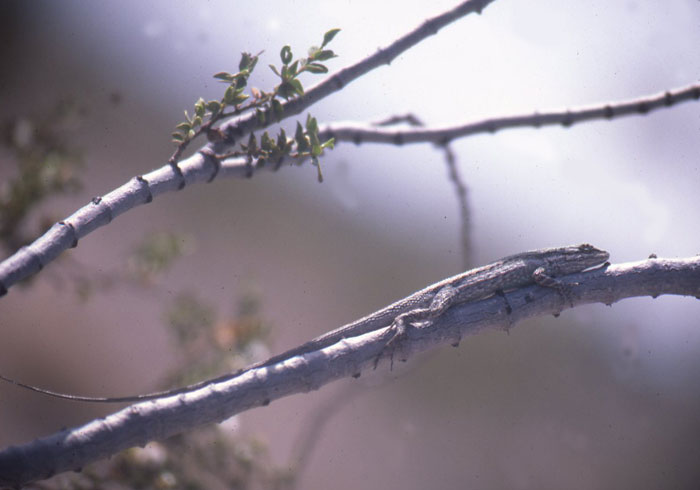
^Long-tailed brush lizard on Creosote. An insect-eating climber.
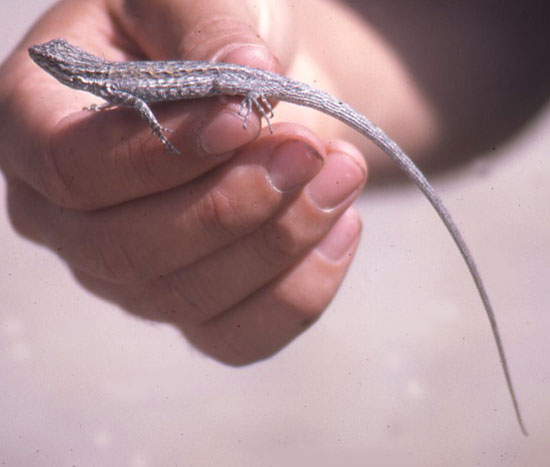
^Long-tailed brush lizard showing its tiny sharp claws used to climb. The tail is used as a balance when scurrying along twigs and jumping from branch to branch.
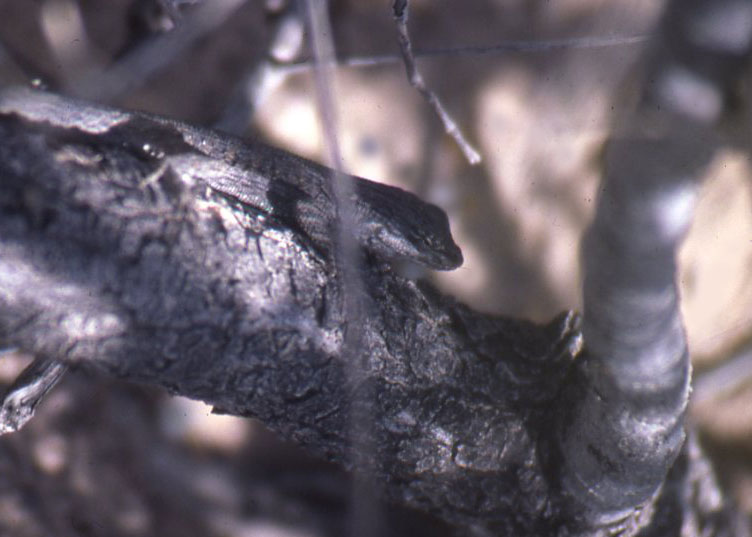
^These little "monkey lizards" live mostly in the central and southern Mojave Desert.
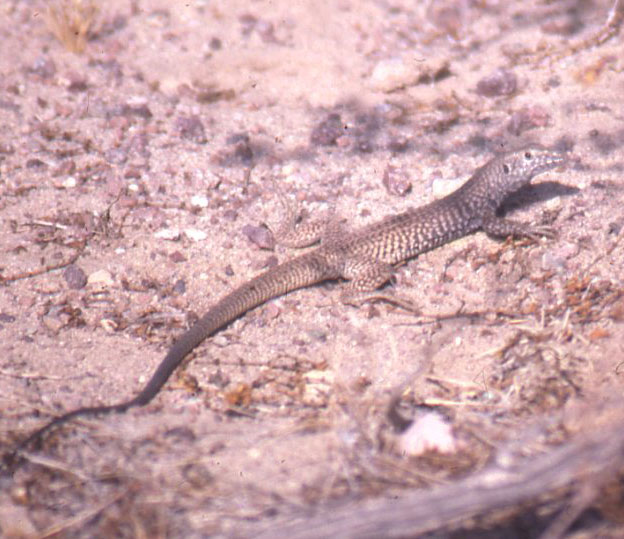
^Western whiptail lizard (Cnemidophorus tigris), an active hunter of small insects on the ground. It uses its front paws to dig through leaf litter under shrubs to look for termites and other arthropods.
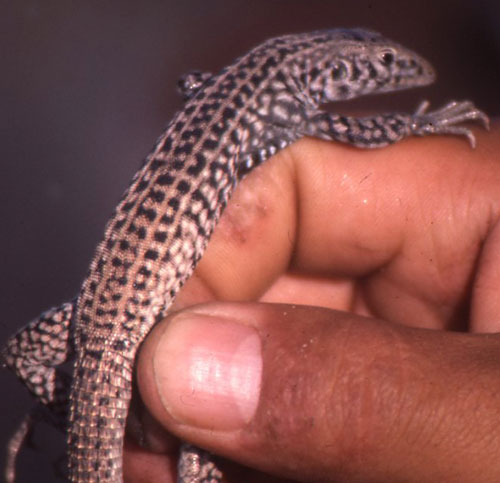
^Western whiptail.
Rare Plants
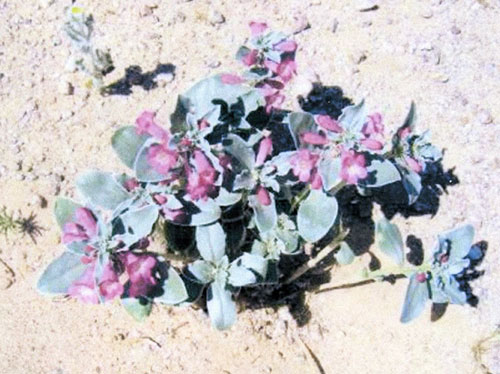
White margin Beardtongue (Penstemon albomarginatus) is known from only four locations in California, one area being the Pisgah ACEC. 22 locations on the Solar 1 proposal site were found in 2008. All these occurrences would be lost due to construction. Efforts to propagate this species from seed have failed in the past. (From Biological Resources Baseline Report)
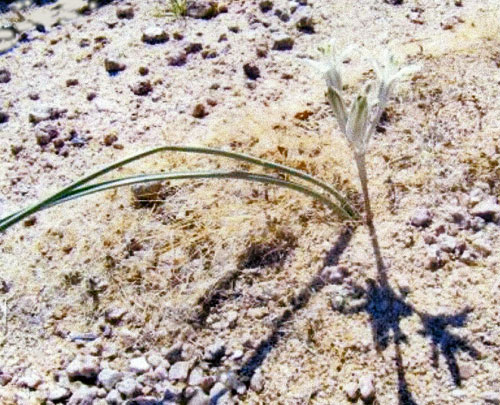
^Small-flowered androstephium (Androstephium breviflorum), a rare lily in the state. All 52 plants observed in 2008 surveys would be lost. (From Biological Resources Baseline Report)
Other rare plants found on the site include Emory's crucifixion thorn (Castela emoryi), a deciduous shrub of dry washes: one specimen was found in 2008 in the north-central part of the assessment area. SES admits this plant would be destroyed during construction, but that the loss of one plant "would not be signififcant" (Biological Resources Baseline Report page 4-2).
Utah milk vine (Cynanchum utahense) is uncommon in the Mojave Desert, and a single plant was observed in 2008 between the railroad and Intertstate 40. Impacts on this plant would be "adverse."
SES says it will take seeds and cuttings of these rare plants and try to relocate them as mitigation, a highly questionable practice that should be rigorously tested before assuming the plants can be grown.
More Plants, Exploring the SES Solar 1 Site
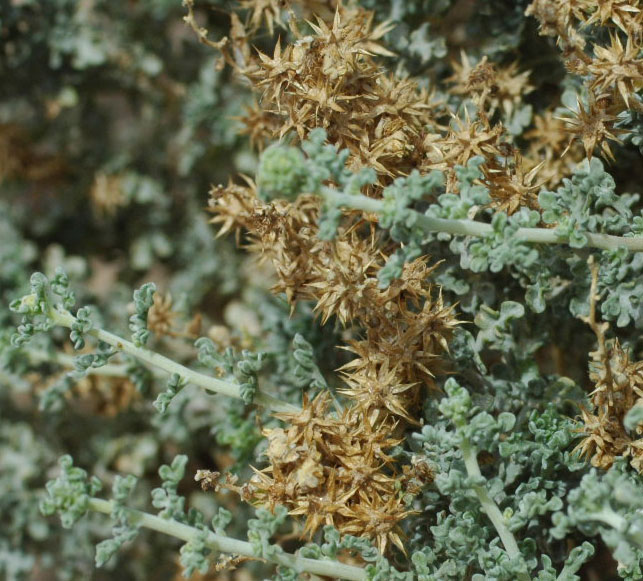
^Bursage (Ambrosia dumosa), showing bur-like seeds.
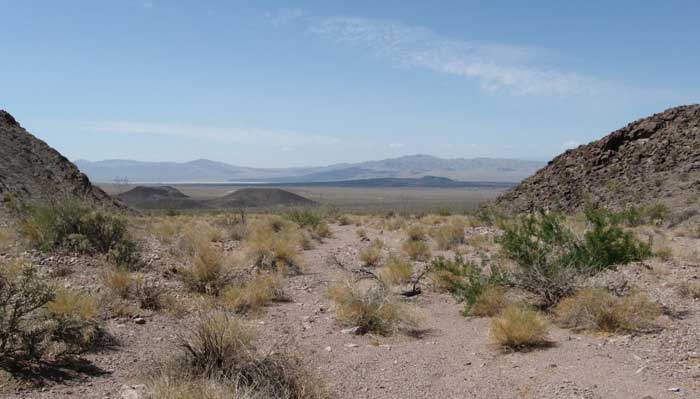
^Canyon mouth looking towards Pisgah Crater.
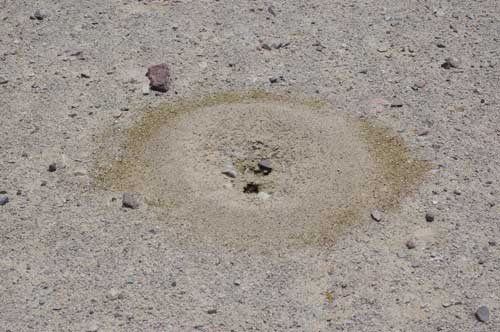
^Anthill in sand flat.
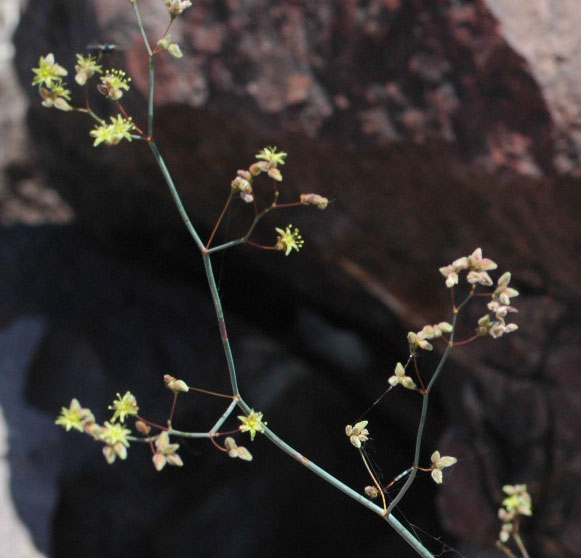
^Desert trumpet (Eriogonum inflatum) flowers.
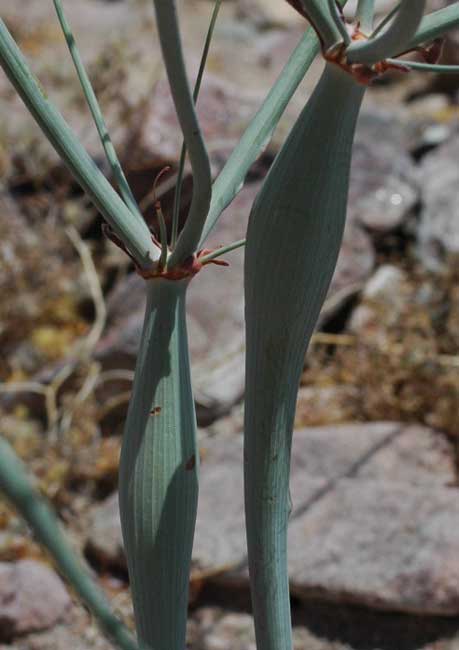
^Desert trumpet, so-named for the inflated hollow stems.
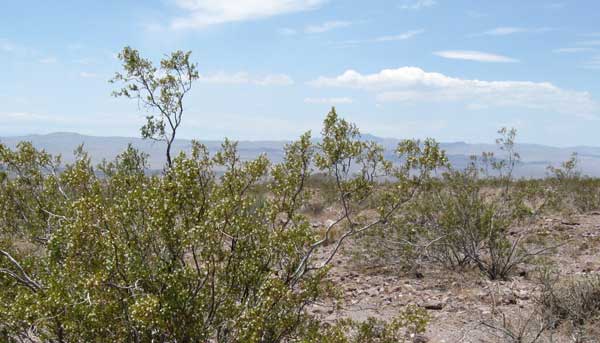
^Creosote (Larrea tridentata) on fan.
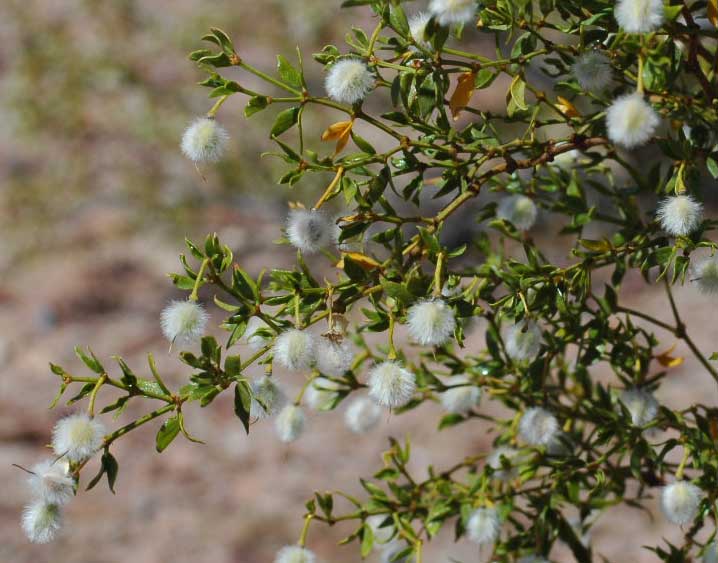
^Creosote seeds.
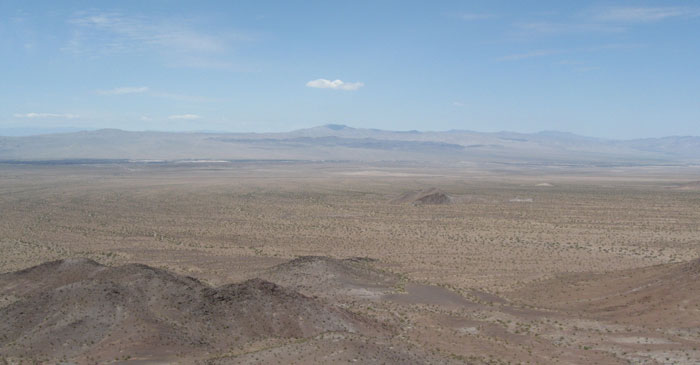
^View of the fan, site of the SES Solar 1 Project.
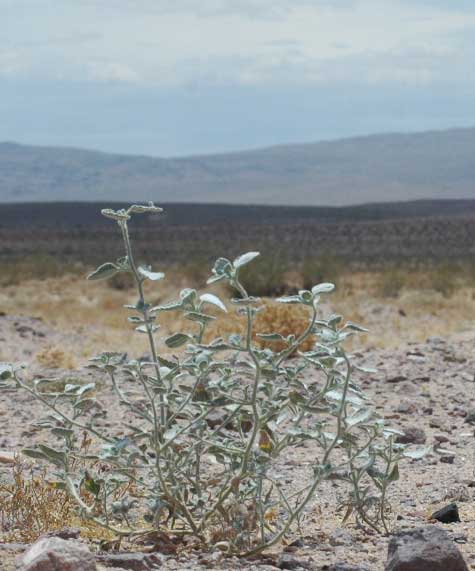
^Desert dicoria (Dicoria canescens).
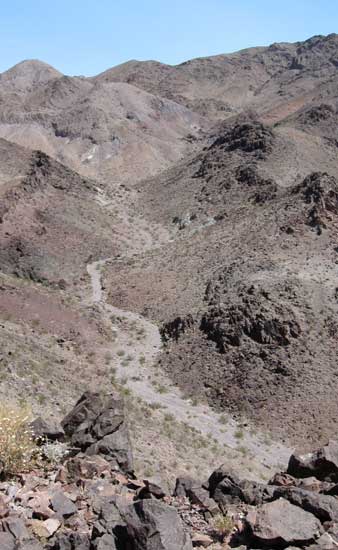
^Canyon in the Cady Mountains.
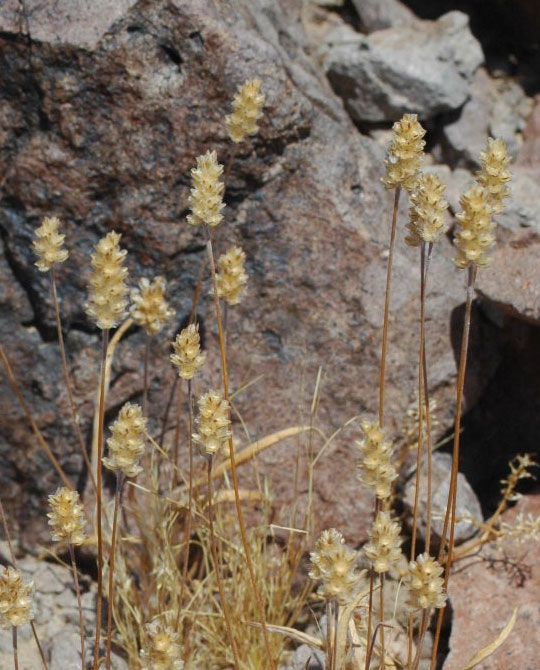
^Dry plaintain (Plantago ovata). This is excellent tortoise food.
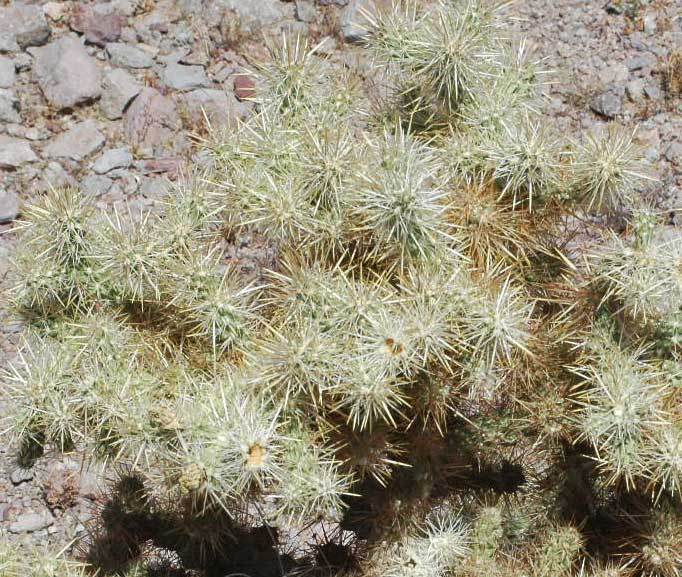
^Silver cholla (Cylindropuntia echinocarpa).
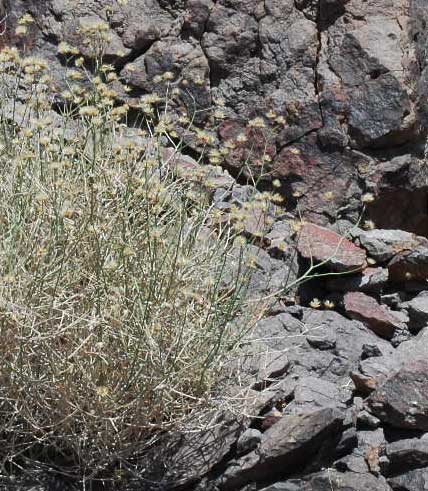
^Bebbia juncea, "Chuckwalla's delight" - a shrub that the herbivorous lizards dine on.
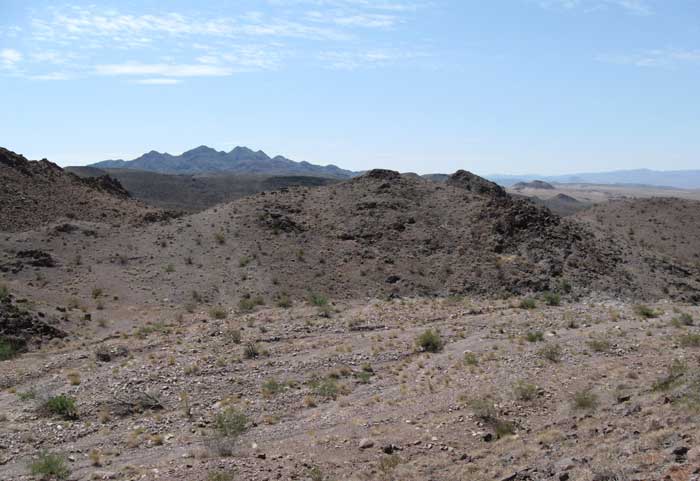
^Cady Mountains canyon wash at the northeast edge of the project site.
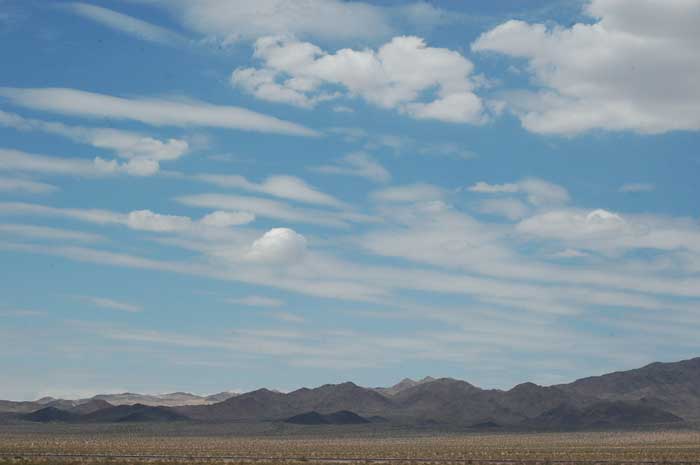
^Sky over the project site fan and Cady Mountains.
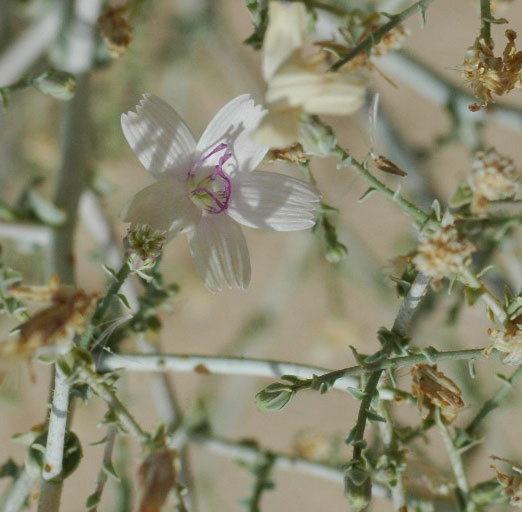
^Wire lettuce (Stephanomeria sp.) flower.
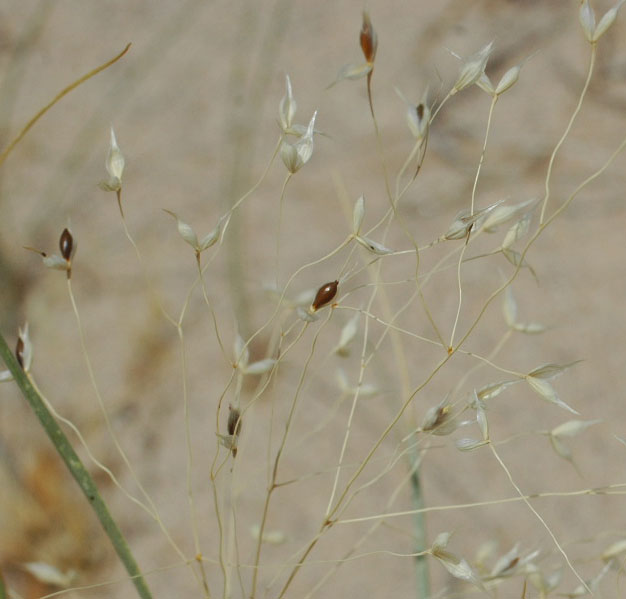
^Indian ricegrass (Achnatherum hymenoides) seeds, used by Native people for thousands of years as a grain food source.
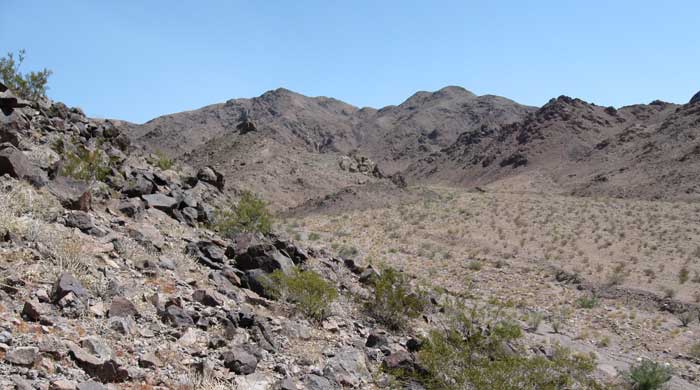
^Cady Mountains foothills.
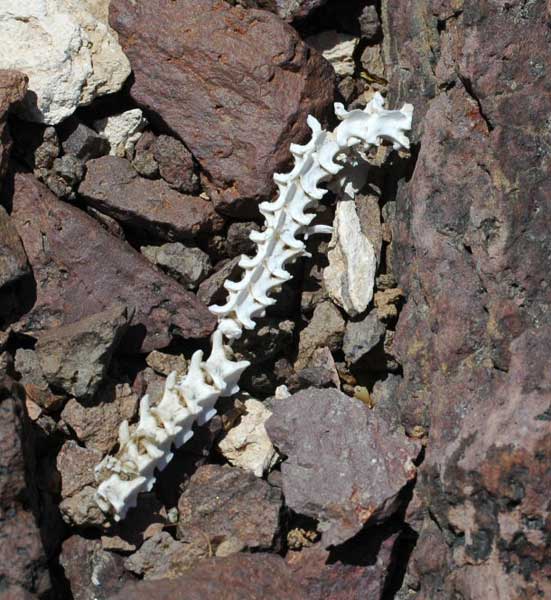
^We found a part of a snake skeleton on the rocky hills, probably the remains of a meal from a Loggerhead shrike or hawk.
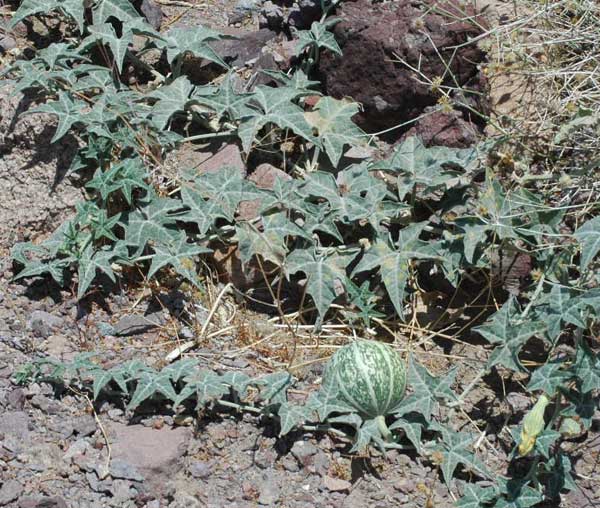
^Coyote melon (Cucurbita palmata) in a canyon wash.
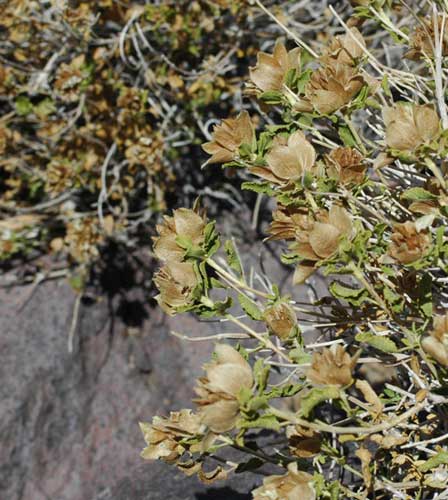
^Dried flowers of Mojave sage (Salvia mohavensis).
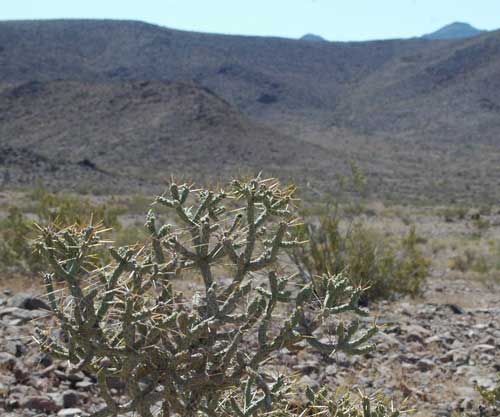
^Pencil cholla (Cylindropuntia ramosissima).
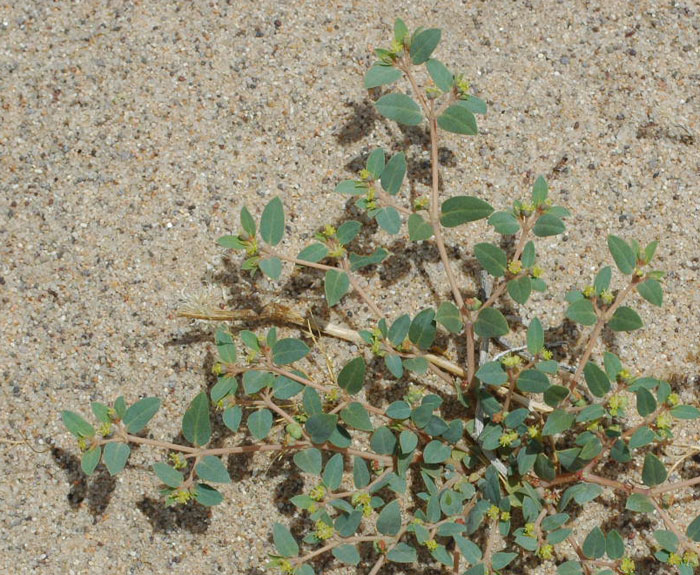
^Sand spurge (family Euphorbiaceae).
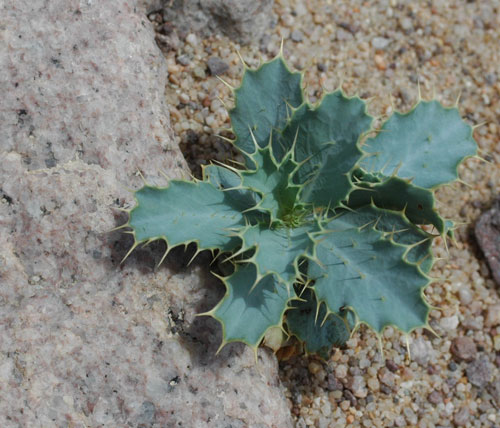
^Prickly poppy (Argemone corymbosa) young plant.
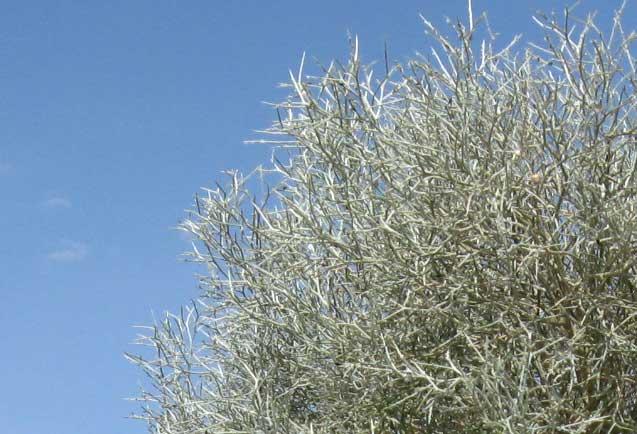
^Smoke tree leaves (Psorothamnus spinosus).
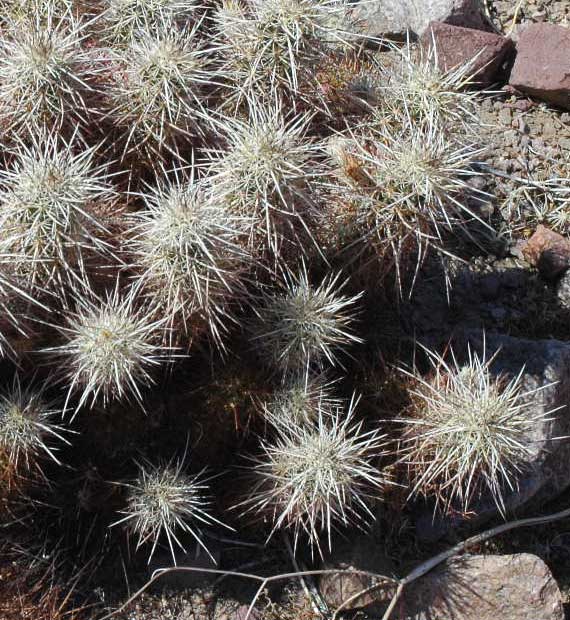
^Calico cactus (Echinocereus engelmannii).
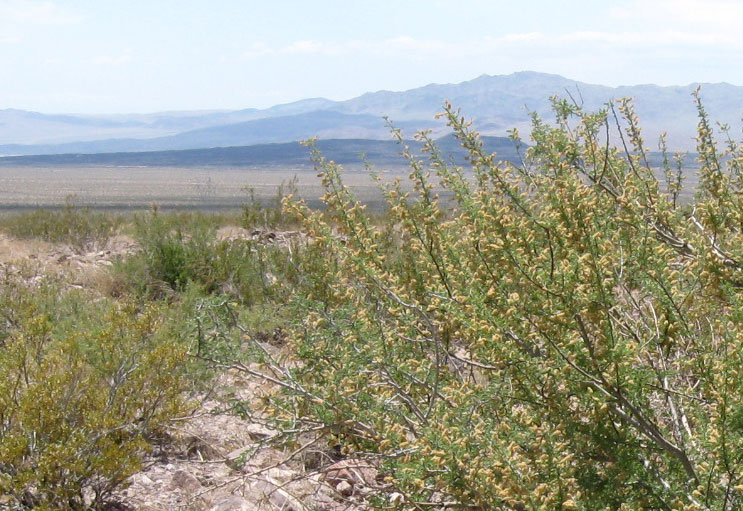
^Catclaw acacias (Acacia greggii).
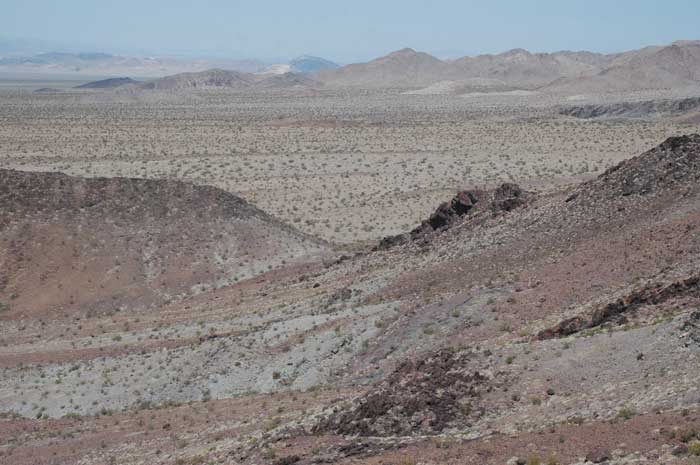
^Project site fans and hills.
Page 1 - SES Solar Energy Project overview.
